Buy How We Move: The Gross Anatomy of Motion – TGC- Elizabeth A. Murray, PhD Course at GBesy. We actively participate in Groupbuys and are committed to sharing knowledge with a wider audience. Rest assured, the quality of our courses matches that of the original sale page. If you prefer, you can also buy directly from the sale page at the full price (the SALEPAGE link is directly provided in the post).
 Our bodies are absolutely amazing. Day after day, year after year, our bodies support and move us in incalculable ways.
Our bodies are absolutely amazing. Day after day, year after year, our bodies support and move us in incalculable ways.
How We Move: The Gross Anatomy of Motion by TGC-
Elizabeth A. Murray, PhD,
Salepage link: At HERE. Archive: https://archive.is/wip/9We1c
Course Overview
Our bodies are absolutely amazing. Day after day, year after year, our bodies support and move us in incalculable ways. With seemingly little conscious effort on our part, our bodies allow us to walk, run, sit, stand—to move through the world. And yet, our bodies are also prone to devastating injuries, and they are susceptible to the degeneration that can accompany aging and disease. This complex system of bones, muscles, tendons, and other vital parts is deeply fascinating and incredibly varied from person to person. Having a deeper understanding of the structure and abilities of the body can give you insight into an intriguing subject of medical study. It also provides you with a guide for caring for your well-being and for dealing with potential issues of health and mobility.
In How We Move: The Gross Anatomy of Motion, you’ll look inside the human body as never before, discovering your gross anatomy, the parts of the body that can be seen with the unaided eye—your macroscopic body. In this course, you will view graphics, photos, videos, and the digital autopsy table called “Anatomage,” to help your understanding of the topics covered. Professor Elizabeth A. Murray, of Mount St. Joseph University, will take you on a journey through the major regions of the body in all their complex grandeur. It’s safe to say that you’ve never seen anything like it! In 24 fascinating lectures, Dr. Murray shares her passion for the form and function of the human body—a passion that becomes contagious.
A cautionary note: As you may know, medical and anatomical study can be rather graphic in nature. With that in mind, the Anatomage software used in several “Digital Cadaver” lectures employs digital images that are based on real-life cadavers. Viewer discretion is advised for younger viewers and those who may be uncomfortable with these highly realistic anatomical learning tools.
The Vocabulary of Anatomy
As with any field of study, anatomy has its own specific terminology. With a quick overview of the roots of anatomical terminology and some directional terms to get you started, Dr. Murray will take you through many of the bones, muscles, and nerves of the human body, one region at a time. This isn’t about memorization—not only is that not necessary, but, as she explains the logic behind the names, the vocabulary will begin to flow naturally and become easier to understand. For example, consider the extensor digitorum, the muscle that extends the wrist and fingers, or the levator scapulae that elevates the shoulder. As you will see, once you have an understanding of how these words connect with the various parts of the body and how they function, these intimidating terms will feel not only logical, but maybe even familiar.
In addition to the numerous functional names, you’ll learn about some of the more unusual nomenclature and its origins, including:
- Sartorious Muscle. This is one of the muscles you use when you cross your legs to put one leg on top of your opposite knee. The name comes from the Latin for “tailor,” since tailors would sit cross-legged with their fabric in their lap while they worked.
- Snuffbox Muscles. This group of three muscles of the posterior forearm travel to reach the thumb. The surface landmark, known as the anatomical snuffbox, is a triangular region near the thumb where people who used snuff would store their tobacco before snorting it.
- Pudendal Nerve. This major nerve of the pelvic region supplies the sphincter muscles that control urine and feces, as well as the muscles that help maintain sexual health and function. Named in the 17th century, the word comes from the Latin meaning “shameful.”
You Have How Many Bones?
Although you’re aware that you have bones, chances are you don’t know precisely how many you have. No problem. If you needed to know, you could look it up in a variety of resources, right? The fascinating answer is “maybe not.” As you’ll learn, human anatomy has a tremendous amount of variability. In fact, for any given anatomical feature, it’s estimated that only 70% of individuals have the by-the-book pattern or structure. This doesn’t mean 30% of humans are “abnormal”—actually, it means that wide variation in human anatomy is completely normal. Dr. Murray still finds unusual anatomical features when teaching gross anatomy, even after 30 years in the field.
In this course, you will learn about several of the most common anatomical variations, including:
- Palmaris Longus. This muscle of the forearm that helps with wrist flexion is the most variable muscle of the body. Studies conducted on geographically diverse populations reveal a prevalence of anywhere from 36 to 99% variance! If you don’t have it, you can still flex your wrist with no trouble. If you do have it, it could become a “spare” body part in case you should ever need it for surgery.
- Plantaris. This muscle, which weakly flexes the knee and ankle, is present in about 80% of individuals. As with the palmaris longus, you can function just fine without it.
- Pectineus. This muscle is in the groin and it helps flex and adduct the hip joint. In some people, it is supplied by the femoral nerve, in others pectineus is supplied by the obturator nerve, and in some people, it is supplied by both.
What Went Wrong?
The study of anatomy can’t help but inspire a sense of wonder as we consider the human body in all its complexities. But on the flip side, the more we learn about the body, the more we realize how many opportunities there are for injury or disease. In How We Move: The Gross Anatomy of Motion, Dr. Murray puts you in the position of medical sleuth by beginning most of the lectures with a clinical scenario requiring a diagnosis. After learning about the muscles, bones, and nerves of that particular body region, you’ll get the chance to assess some of the problems presented, such as:
- Dowager’s Hump. A 74-year-old woman has developed what’s sometimes called a dowager’s hump in the upper back. Her posture has become stooped in the thoracic region of the spine, causing her to hunch forward. What’s happened over time?
- Spinal Cord Injury. A young man was badly injured in a motor vehicle accident, and his sixth and seventh cervical vertebrae were crushed. His spinal cord was essentially severed at the level of this fracture. Will he be able to breathe on his own or will he require a respirator to breathe for him?
- Broken Hip. A 68-year-old woman stepped out of her car and fell. She felt excruciating pain in her left hip and was unable to get up. She told paramedics that she didn’t think she tripped over anything, the pavement wasn’t wet or slippery, and she wasn’t dizzy or disoriented. What actually caused her fall?
While this course will help you assess patients like these and others, the much more important benefit is what you will learn about yourself. Not only will you develop a deeper understanding of your own body, but you’ll also be better equipped to avoid injury and to take good care of your amazing and marvelous anatomy.
24 Lectures
Average 31 minutes each
1The Essential Language of Anatomy
2Bones as the Body’s Framework of Movement
3Joints: Structure Determines Function
4The Terminology of Movement Patterns
5Muscles as Systems for Motion and Support
6The Role of the Nervous System in Movement
7The Spine: Fundamentals of the Body’s Axis
8The Skeleton of the Head and Torso
9The Many Muscles of the Head and Neck
10Back Muscles: Layering and Movements
11Torso Muscles: Thoracic, Abdominal, and Pelvic
12Digital Cadaver Lesson: Head, Neck, and Torso
13The Brachial Plexus of the Upper Limb
14The Shoulder: Mobility versus Stability
15Shoulder to Elbow: The Anatomical Arm
16The Complexity of the Forearm and Wrist
17The Hand and How It Works
18Digital Cadaver Lesson: The Upper Limb
19Nerve Plexuses of the Lower Limb
20The Multiplex Pelvis and Its Hip Joint
21The Thigh: Our Largest Bone and Its Muscles
22Knee to Ankle: The Anatomical Leg
23The Features of Our Complicated Feet
24Digital Cadaver Lesson: The Lower Limb
Hide Full Lecture List
Buy the How We Move: The Gross Anatomy of Motion – TGC- Elizabeth A. Murray, PhD course at the best price at GBesy.. After your purchase, you will get access to the downloads page. You can download all the files associated in your order at here and we will also send a download notification email via your mail.
Unlock your full potential with How We Move: The Gross Anatomy of Motion – TGC- Elizabeth A. Murray, PhD courses. our courses are designed to help you excel.
Why wait? Take the first step towards greatness by purchasing How We Move: The Gross Anatomy of Motion – TGC- Elizabeth A. Murray, PhD courses today. We offer a seamless and secure purchasing experience, ensuring your peace of mind. With our trusted payment gateways, Stripe and PayPal, you can confidently complete your transaction knowing that your financial information is protected.
Stripe, known for its robust security measures, provides a safe and reliable payment process. With its encrypted technology, your sensitive data remains confidential throughout the transaction. Rest assured that your purchase is protected.
PayPal, a globally recognized payment platform, offers an additional layer of security. With its buyer protection program, you can feel confident in your purchase. PayPal ensures that your financial details are safeguarded, allowing you to focus on your learning journey.
Is it secure? to Use of?
- Your identity is completely confidential. We do not share your information with anyone. So it is absolutely safe to buy the How We Move: The Gross Anatomy of Motion – TGC- Elizabeth A. Murray, PhD course.
- 100% Safe Checkout Privateness coverage
- Communication and encryption of sensitive knowledge
- All card numbers are encrypted using AES at relaxation-256 and transmitting card numbers runs in a separate internet hosting atmosphere, and doesn’t share or save any data.
How can this course be delivered?
- After your successful payment this “How We Move: The Gross Anatomy of Motion – TGC- Elizabeth A. Murray, PhD course”, Most of the products will come to you immediately. But for some products were posted for offer. Please wait for our response, it might take a few hours due to the time zone difference.
- If this happens, please wait. The technical department will process the link shortly after. You will receive notifications directly by e-mail. We appreciate your wait.
What Shipping Methods Are Available?
- You will receive a download link in the invoice or YOUR ACCOUNT.
- The course link always exists. use your account to login and download the How We Move: The Gross Anatomy of Motion – TGC- Elizabeth A. Murray, PhD course whenever you need.
- You only need to visit a single link, and you can get all the How We Move: The Gross Anatomy of Motion – TGC- Elizabeth A. Murray, PhD course content at once.
- You can do your learning online. You can be downloaded for better results and can study anywhere on any device. Make sure your system does not sleep during the download.
How Do I Track Order?
- We always notice the status of your order immediately after your payment. After 7 days if there is no download link, the system will automatically complete your money.
- We love to hear from you. Please don’t hesitate to email us with any comments, questions and suggestions.
![GBesy [GB] GBesy [GB]](https://www.gbesy.com/wp-content/uploads/2023/05/gbesy-Logo-full-100.png)

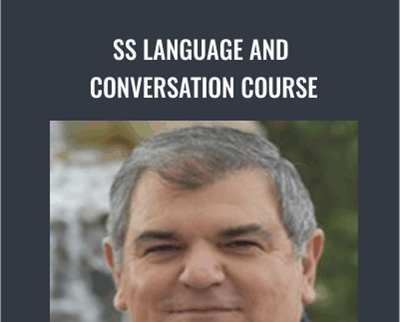
 Purchase this course you will earn
Purchase this course you will earn 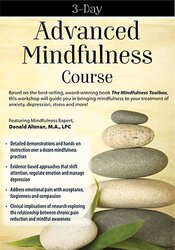
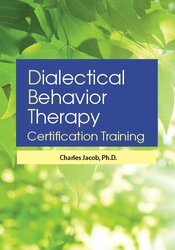
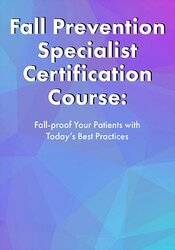
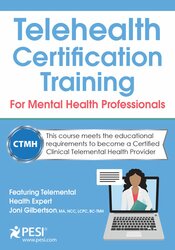
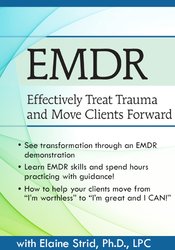
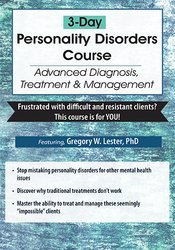
Reviews
There are no reviews yet.